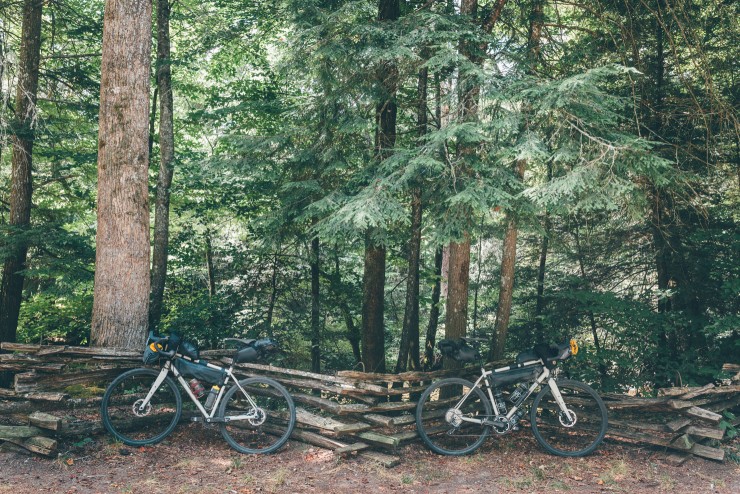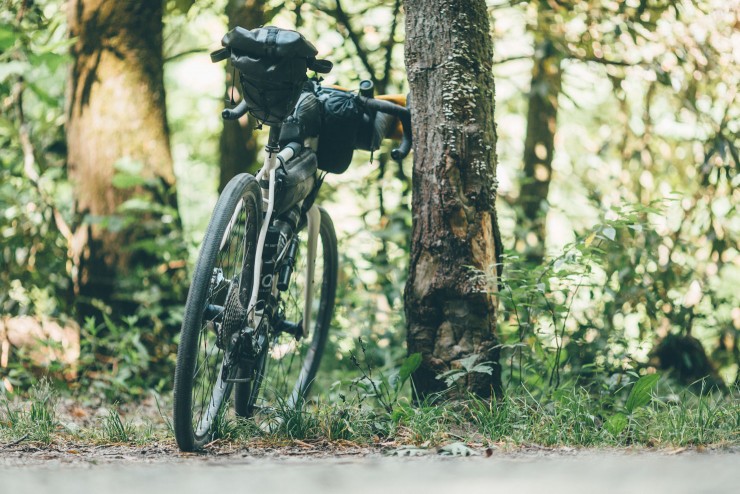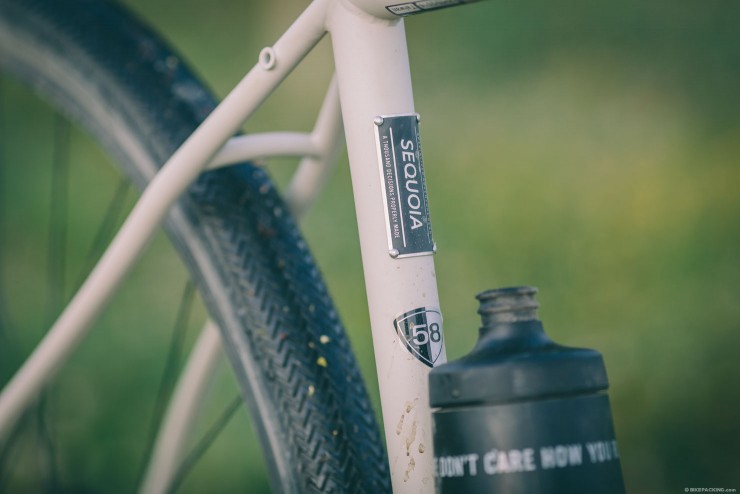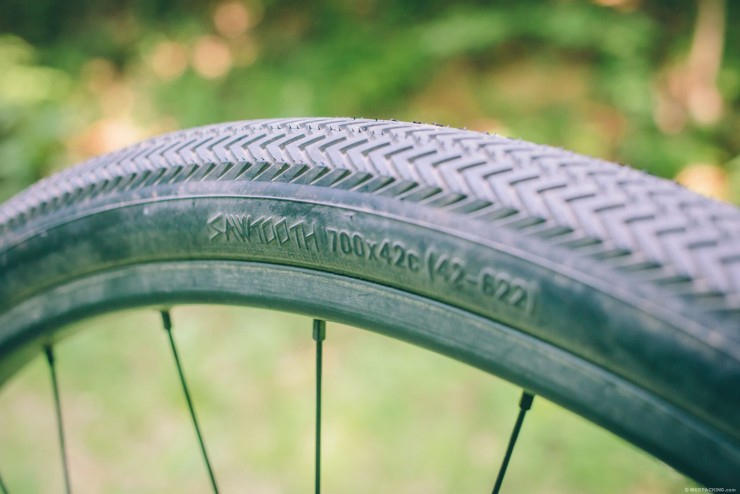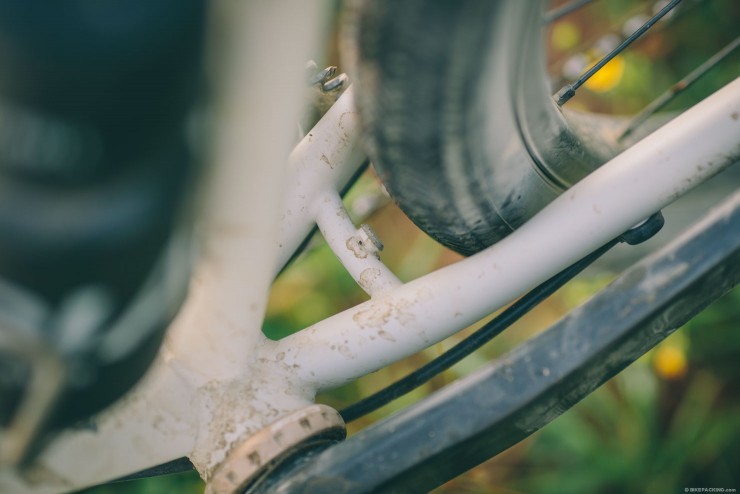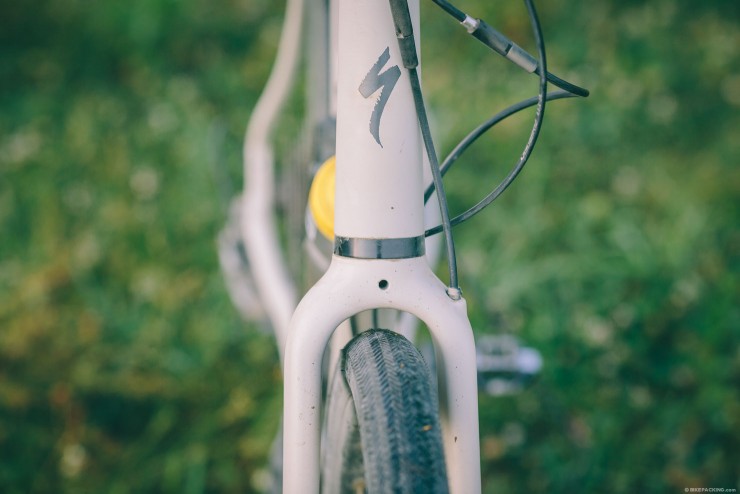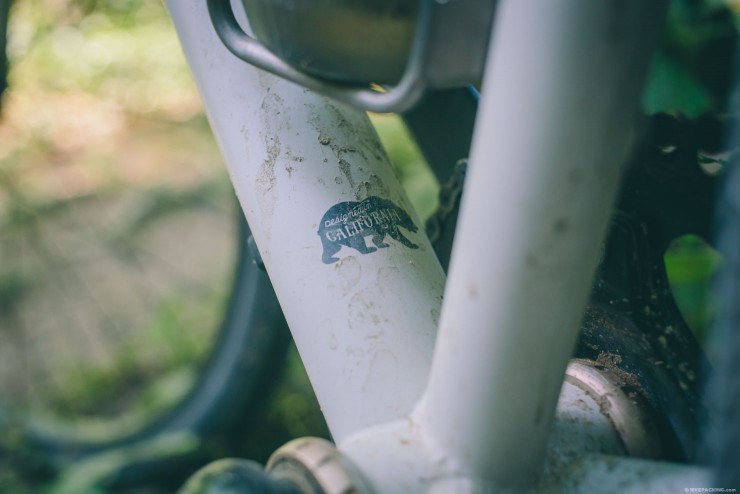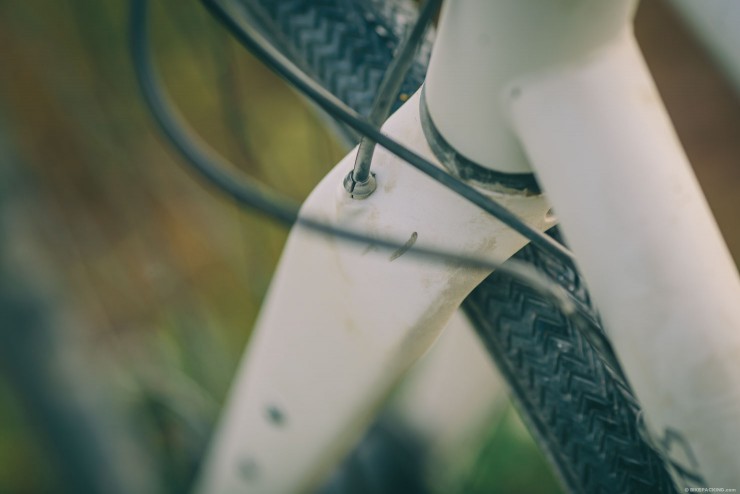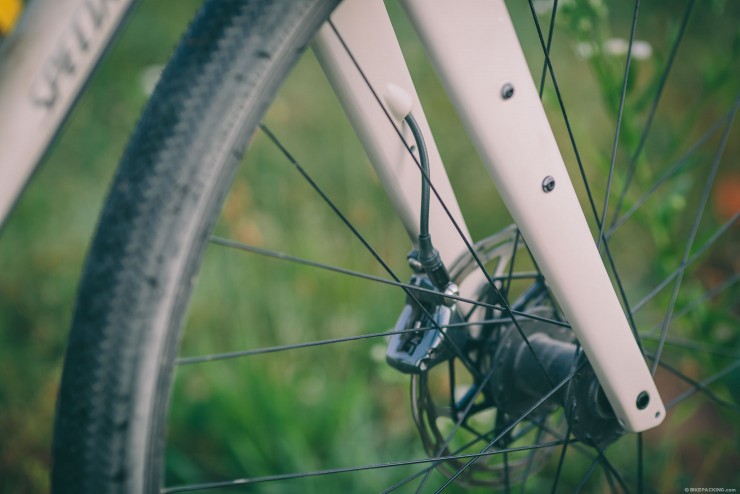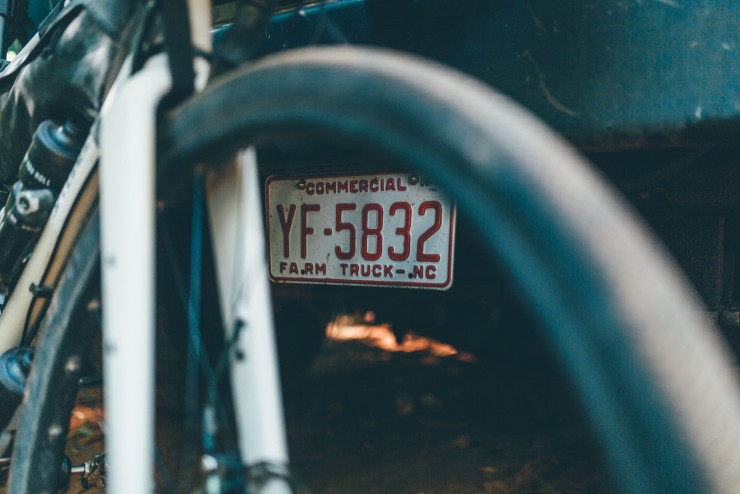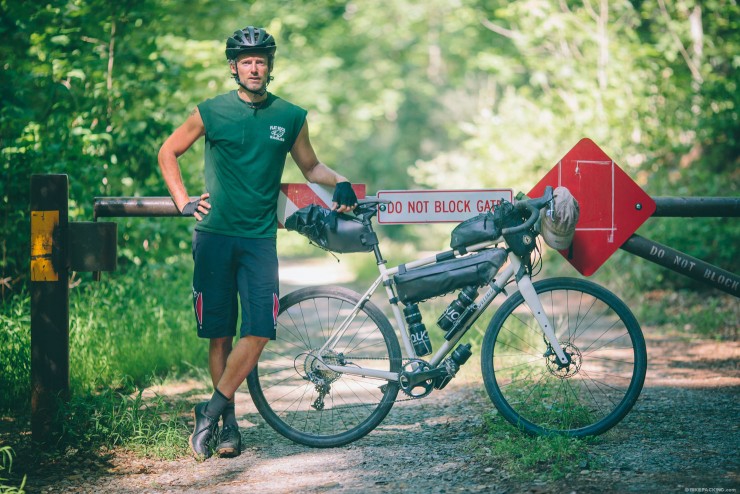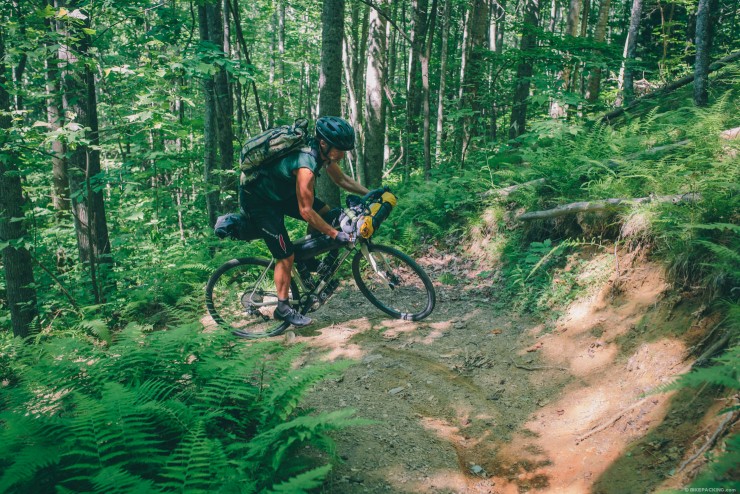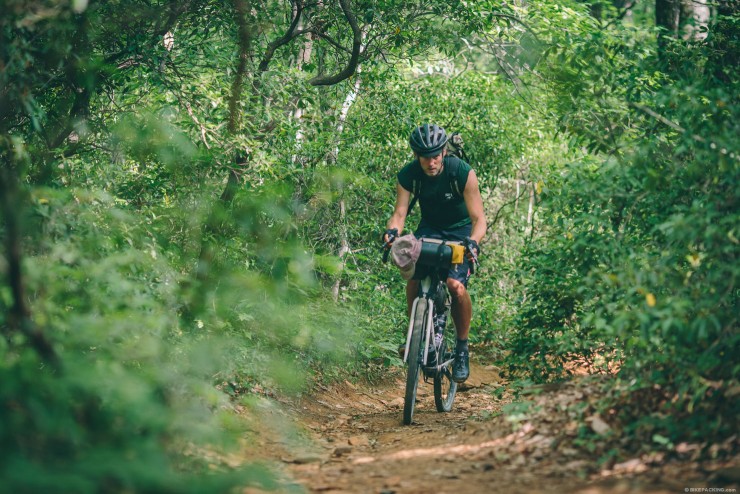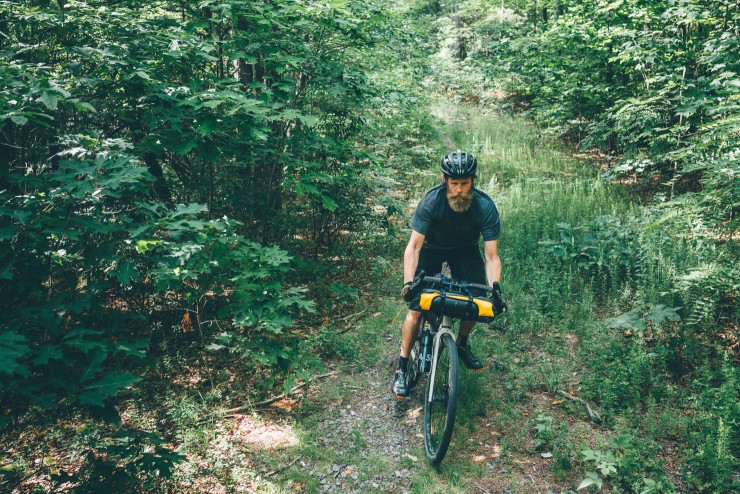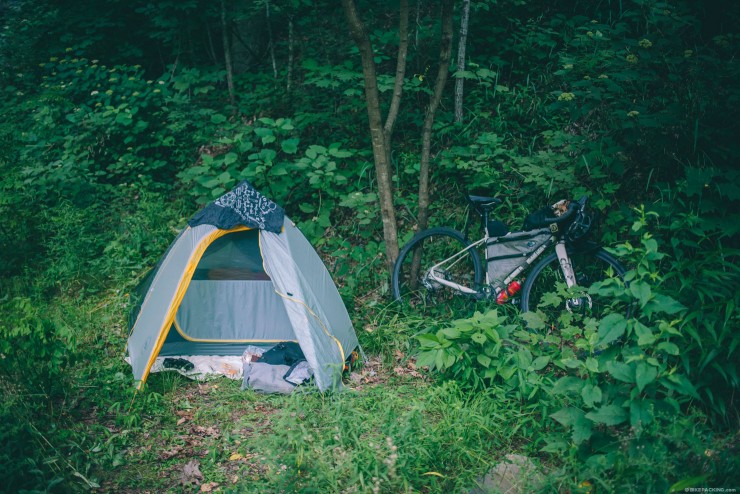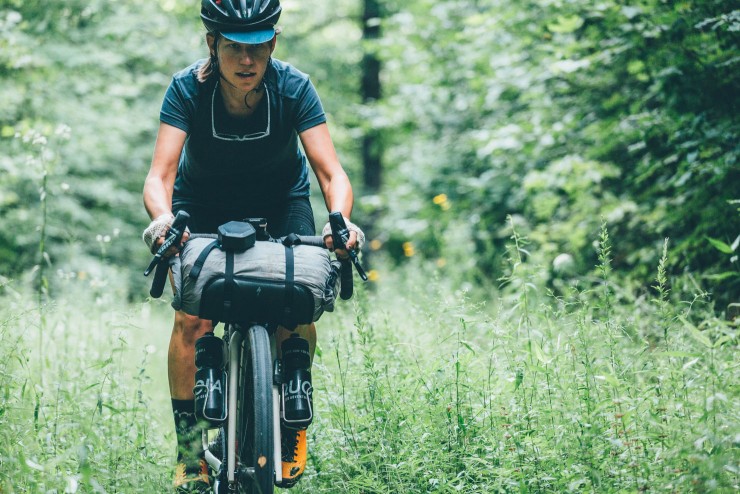Specialized Sequoia Review: 1,000 decisions.
Named after one of the first bikes the company ever produced, the all new, 2017 Specialized Sequoia is an adventure rig that aims to introduce a new generation to the pleasures of all-road bikepacking. We take it to North Carolina’s Pisgah National Forest to see how it performs, both on and off road…
Specialized bikes have appeared at various points throughout my cycling history. My first long distance bike tour – from Australia to the UK – was aboard a ‘98 Rockhopper Comp. I later worked as a messenger in London, riding a flat barred Sirrus. More recently, I picked up a 1983 Stumpjumper from the pages of my local Craigslist. The latter shares a similar pedigree to the new Sequoia, named as it is after one of the brand’s very first bikes, a sport touring model released in 1981.
In fact the original tagline – 1000 decisions, properly made – has even been rekindled for its launch, an event Logan and I attended in the humid, mountain folds of the Pisgah National Forest. As such, this review is based on a week of hard riding – including a campout – so it’s more initial impressions than a long term appraisal.

Although the two bikes share a name, the three decades that separate them reflect a slew of changes in cycling technology, standards, geometry and manufacturing: the similarities end in the use of their frame material. As steel purists, we were pleased the new Sequoia harks back to its past, albeit with a size-specific, butted tubing Specialize call Premium Cr-Mo. Compared to the more curvy, aluminum and carbon Specialized Diverge, it’s a softbag-friendly frame that’s shared by all three models in the lineup: the $1300 entry level Sequoia, the $2000 Elite and the $3500 (an Expert Module frameset is also available for $1200, while the basic Sequoia gets a steel fork in lieu of carbon blades).
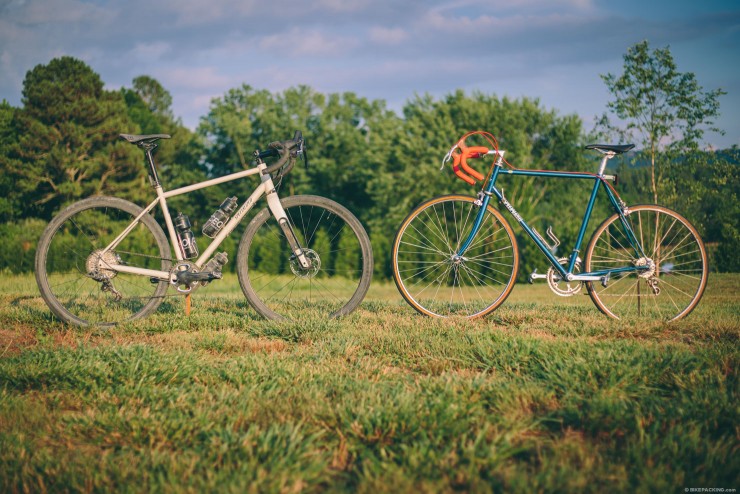
Elsewhere, all the bikepacking boxes are ticked. There’s provision for a thirst quenching 3 water bottles on the frame, plus two more on the color matched carbon fork too – an inclusion that we’re particularly grateful to see. For those who anticipate hauling extra gear, there’s mounts for front and rear racks (or Specialized’s own Pizza Rack), as well as hidden fender eyelets for the more practical minded. Clearances are definitely on the generous side. Depending on the tire, the rear triangle should easily accommodate 45c knobblies without a mudguard – which seems a sensible cutting off point for a bike of this type. Or, for those who prefer to keep road crud from flinging into their faces (and those of their fellow riders), it takes a 700×42 or 650×47 tires with fenders. As for looks, the chainstay tubing is particularly elegant, the dropouts are especially neat, and the graphics are refreshingly understated. Internally routed hydraulic cables help further to keep its cool aesthetics clutter free, as does cable routing for a potential dynamo upgrade – another of our favourite bikepacking accessories. Propelling it firmly into the 21st century, the new Sequoia sports direct mount disc tabs, Di2 compatibility, and comes with the latest thru axle spacing — 100x12mm for the fork and 142x12mm for the rear — which will please some and no doubt have traditionalists bemoaning ever changing industry standards. Like the Niner RLT 9 Steel we liked so much, the Sequoia weaves up to-the-minute tech and adventure-minded geometry into the classic appeal of a steel frame.
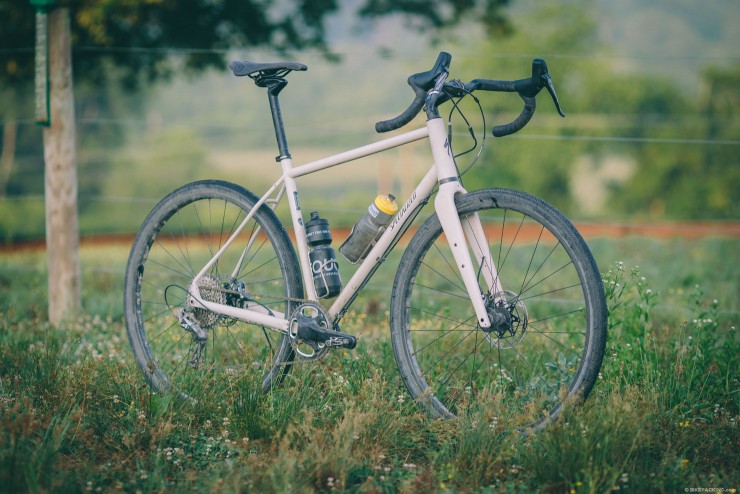
Of course, wheels are also an important part of any package, particularly for a bike with laden adventures in its crosshairs. We were pleased to see stout looking looking hoops as part of the build, using a box section Crucero rim that measures a generous 25mm internally and 30mm externally. Aside from being tubeless ready, the spoke length is the same on both the drive and non drive side, front and rear wheels alike – which simplifies carrying spares while on tour. A nice touch. Available in a 700c format at launch, a 650b wheelset will added to the lineup in early spring, as well as a compatible 47mm Sawtooth tire. This means you can chop and change between the two wheel sizes, using the same frame.
Talking of tires, we were impressed with the 42mm Sawtooth, a model that will be available for a very reasonable $40. As the name suggests, it features a zigzaggy tread; there’s a fast rolling center line, and edges that are designed to dig in on dirt. In practise, it rolled smoothly on pavement, felt assured on gravel, and tamed roots too – not that we had the chance to try it in wet conditions. Given their width, the Sawtooths add both comfort and capability – such that we felt the pleasure of riding singletrack fast wasn’t overly compromised. I’d love to see the Sequoia shod with knobblier tires, but the truth is, they’re good all rounders. Our bikes were set with tubes – running them tubeless would no doubt eek out even more speed and performance, without risking pinch flats.
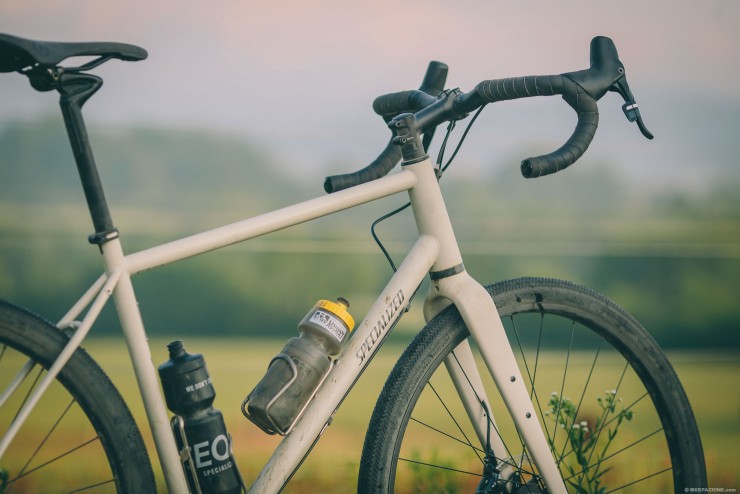
In terms of handling, we found the Sequoia strikes a pleasing, well mannered balance. At around 24lbs (10.9kg), it’s certainly engaging to ride unladen, yet clothed in a light bikepacking setup, it’s sure footed too. 430mm chainstays – compared to say, the Diverge’s 420mm – help lend a touch of extra stability, as does a low bottom bracket and a relatively slack head angle. Sarah noticed a small amount of toe overlap in the 52cm model, but not enough to be an issue.
It’s a versatile bike too, evident in the way it took everything we threw at it in its stride – including rooty, sometimes rocky singletrack, flowy packed trails, long and loose gravel descents, and rolling pavement backroads. Being a demo bike, mine was set up with a shorter fork steerer tube than I’d normally go for, lending it a more aggressive riding position. Still, I didn’t suffer any backache during any of the multi-hour rides. Relatively large volume tires no doubt helped, as did a refined frame, carbon fork and carbon seat post.
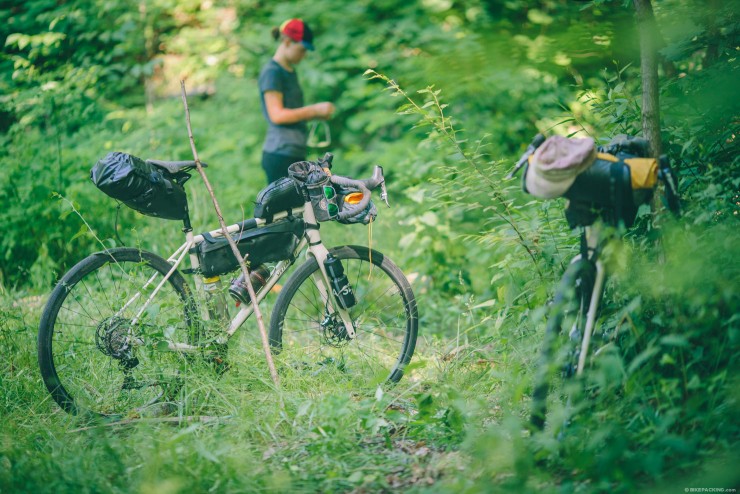
To be honest, I’ve never found braking on a drop bar setup nearly as confidence inspiring as on flats, particularly off road. SRAM’s Force hydraulic brakes, however, were simply awesome – especially when it came to long, rough and otherwise hand numbing descents. With so much power and modulation on tap, I quickly realised how effective it is to tuck down in the drops on fast, unpaved descents, or when negotiating twisty, rolling singletrack. For anyone used to the more upright stance of a mountain bike, riding drops takes a certain commitment, for sure, but can also inject a bundle of fun into an otherwise mellow trail.
Other neat touches include flared, shallow drop handlebars that feature a slight rise to them, along with matching finish on the bar wrap and lean saddle – a blue canvas. We should point out that for longer trips, we’d have swapped out the carbon ‘Cobble Cobbler’ seatpost for an aluminium one, especially when running seatpacks that use a clamp – as with Specialized’s new Burra Burra Stabilizer Seatpack, or Porcelain Rocket’s Mr Fusion.
As is often the case with stock bikes, gearing was a little on the high side for loaded bikepacking, but offered a good range for hilly, mixed terrain day rides. Teamed with an 11-42T block, there were definitely moments that a 42T chainring was undergeared for our campout, given the relentlessly rolling topography of the Pisgah National Forest and the humid summer heat. But the good news is that the 1x drivetrain makes quick changes easy – dropping down to a 38T chainring doesn’t even require a change in chain length. Note that for those who prefer knee-saving doubles, both the Sequoia Elite and the Sequoia equipped with a broader gear range – the Elite sports a 48/32T compact, mated to a 11-36T cassette. In fact, in some ways the cheaper Elite – priced at $2000 – makes the better fit for bikepackers heading for the road less traveled, coming as it does with a readily sourced Shimano 105 finishing kit and a seatpack-friendly aluminum seat post, on top of its wider gear range. Otherwise, just make sure you pack light…
Build Kit (Sequoia Expert)
- Frame: Premium Cr-Mo size-specific tubing, Adventure Geometry
- Cable-routing: Internal light cable routing in both frame and fork
- For touring/bikepacking: Fender/rack mounts, fork bottle cage mounts
- Fork: Specialized FACT carbon, tapered, flat disc mount
Drivetrain
- Crankset: FSA SL-K Light, PF30 System Interface, 10-/11-speed, 147mm Q-factor, 110 BCD
- Chainring: Megatooth V2 XX1, 42T
- Bottom Bracket: FSA MegaEvo, threaded
- Derailleur (rear): SRAM Force1 Type 2.1, long cage, 11-speed
- Shifter Rear: SRAM Force Hydraulic Disc
- Cassette: Shimano Deore XT, 11-speed, 11-42t
- Chain: KMC X11SL-1 DLC, 11-speed w/reusable MissingLink
Components
- Wheels: Specialized Adventure Gear Cruzero
- Tires: Specialized Adventure Gear Sawtooth 2Bliss Ready, 700x42mm
- Brakes: SRAM Rival 1, hydraulic disc, 160mm rotors
- Handlebar: Specialized Adventure Gear Hover
- Tape: Specialized Adventure Gear S-Wrap Canvas Tape
- Seatpost: Specialized CG-R, FACT carbon, single bolt, reflective, 27.2mm
- Saddle: Body Geometry Phenom Comp, hollow Cr-Mo rails, 143mm
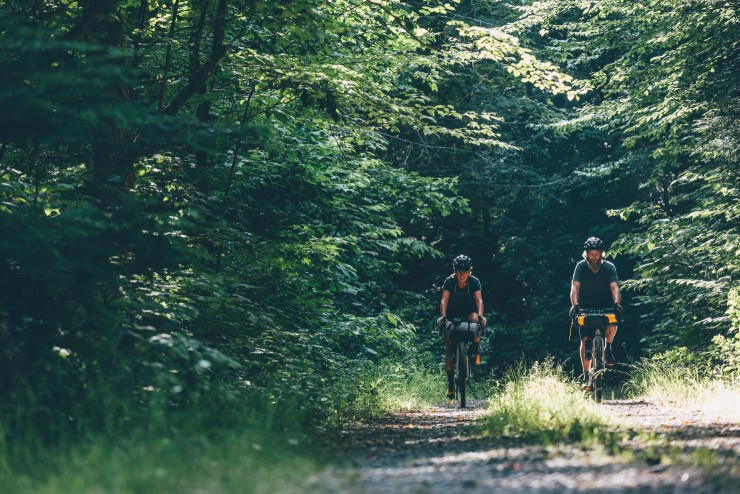
Pros
- Adventure Geometry dialed for light trail work, long saddle days, and loaded riding.
- Fork cage mounts … applause!
- Sawtooth and Cruzero tubless tire/wheel combo seems solid and well thought out.
- Details such as the fact that the front and rear have a single spoke length… ideal for emergency prep.
- Minimal paint and graphics are eye-pleasing.
- The Phenom Comp saddle is surprisingly comfortable.
Cons
- Carbon seatpost is super light and comfy, but not ideal for a clamp mounted seat pack, such as their own Stabilizer Seatpack or Porcelain Rocket’s Mr. Fusion.
- The Gearing is too high for loaded, hilly bikepacking; a 36t or 38T ring up front would be a welcome addition.
- Model Tested Specialized Sequoia Expert
- Size Tested 61″
- Sizes Available 50,52,54,56,58,61″
- Weight (as tested) 24 lbs (10.9kg)
- Price $3,500
- Contact Specialized.com
- Recommended Uses Gravel slogs, dirt road wandering, all-roads bikepacking
Wrap Up
Over the week that we rode it, the Sequoia really won us over: perhaps our most strongest impression was how well thought out it feels. Manufacturers have been know to hurriedly launch a bike to answer a trend. The Sequoia feels like the opposite: there’s a sense that it’s been painstakingly refined over miles of open road, by a team who live and breath mixed terrain outings, be they brevets, forest road adventures or long weekend campouts. The level of detail is impressive – from unusual touches like ‘riser’ drop handlebars, the use of a single spoke length in its wheelset, and the neatly eyeletted carbon fork – to its undoubtedly clean, uncluttered lines and classy finish.
In terms of the way the Sequoia rides, we found it strikes a very happy medium, one that likely suit anyone inspired to give both ‘all-road’ riding and bikepacking a go. It’s handling is on the engaging side of predictable – it’s as satisfying to ride unloaded as it is loaded, on gravel as much as pavement. Sure, there are road bikes that are lighter and spritelier. But there aren’t many ‘touring’ bikes that handle this well out on an all day, mixed terrain ride, unencumbered by gear. In short, it’s a modern all rounder that will speedily shuttle you out to your nearest national forest, and encourage you to delve deep into its backroads once you’re there.

Sequoia vs AWOL vs Diverge
Specialized offer three 700c, drop handlebar bikes in their Adventure range. Having ridden the 5000 mile TAT on an AWOL, the Diverge on local all day adventures and the 600k Crush the Commonwealth, and the Sequoia on a 500 mile ride from North Carolina to Ohio, we asked Sarah Swallow to sum up her thoughts about which works best for what…
“The Sequoia fills the gap in Specialized’s 700c adventure bicycle line-up combining the touring utility of the AWOL, and the quick handling, high-tech characteristics of the Diverge.
Each bike occupies a specific niche depending on the terrain, and it’s capability. The AWOL has the utility, slower steering and bombproof characteristics of a traditional touring bike but with the added clearance to fit up to a 29 x 2.0 tire. It’s an ideal bike for adventure touring/bikepacking on dirt roads, pavement, and even the occasional single-track. In my experience, it definitely rides at its best with a load. If I was planning a primarily paved ride with a few opportunities for gravel roads here and there, it would be the light and speedy carbon Diverge that I would choose. With its clearance for 35mm tires, it makes it a great bike for all-day rides and shorter mixed terrain tours that favor pavement, while still being able to handle some surprisingly rough roads too. The Sequoia strikes the sweet spot between the two. With slightly less tire clearance than the AWOL (700 x 45mm), a carbon fork and a lighter steel frame, I’ve found it the ideal candidate for lightweight paved and dirt road touring, gravel grinding, and mixed terrain rides. What I like most about the Sequoia is that it feels equally capable with or without a load.”
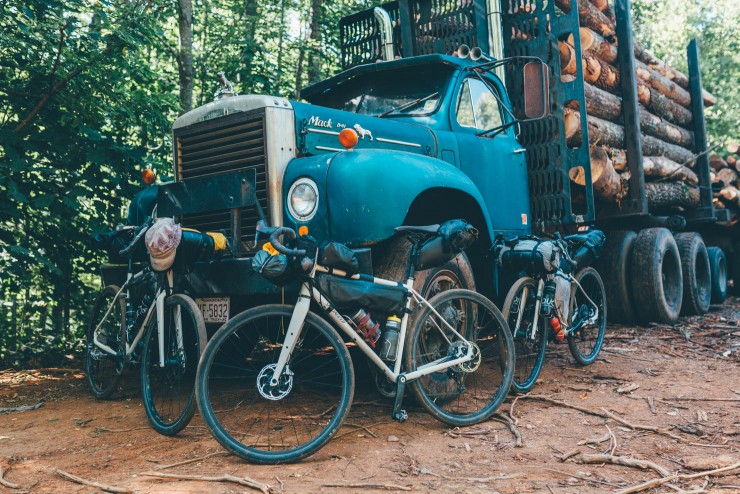
Up next, our impressions of the all new line of Specialized Burra Burra Bikepacking Bags…
Please keep the conversation civil, constructive, and inclusive, or your comment will be removed.







